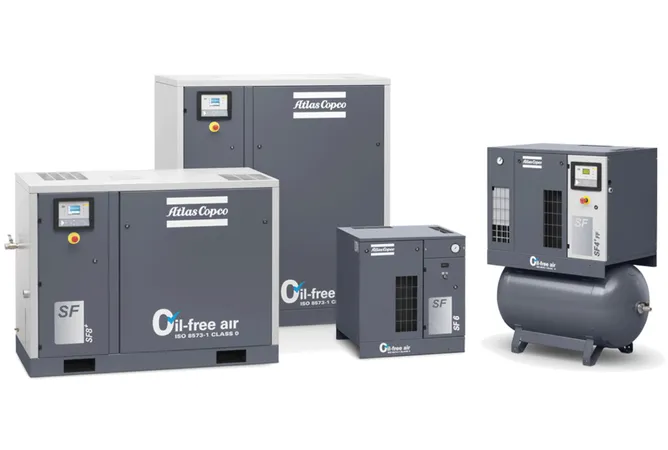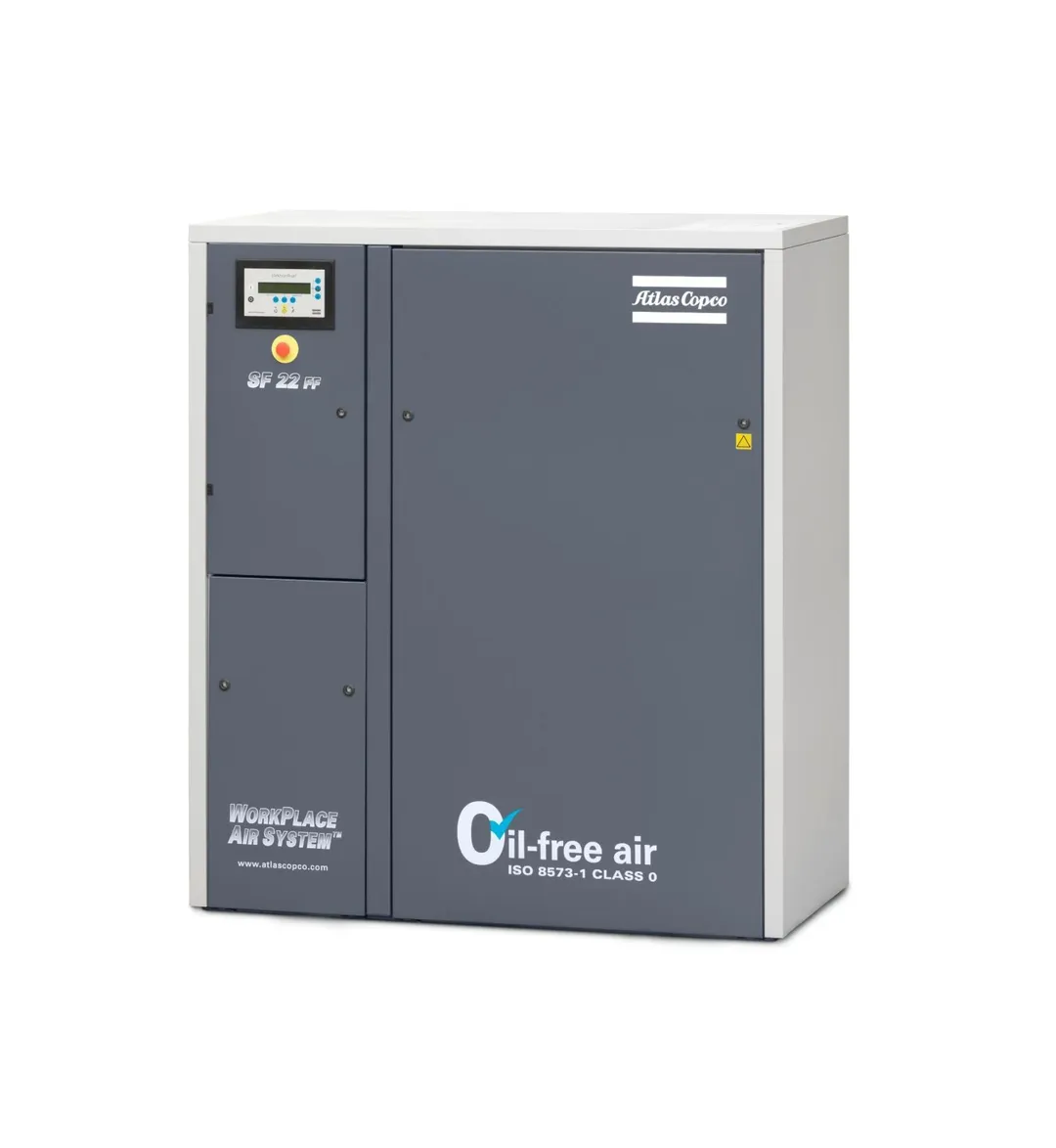Compressor (stationary)
The simple fact: ‘more energy = more production’ certainly also applies to compressed air blasting. The compressor must therefore match the type of blasting and the size of the project.
In fact, with more compressed air capacity, larger nozzles can be used that give a larger blast pattern. This enables faster work.
In blast cabinets, nozzle diameter is limited by both the limited working space and the extraction capacity of the unit. Typical nozzle diameters in practice are therefore 4.8 to a maximum of 8 mm, so that sufficient visibility is still maintained in the blast cabinet.
As a result, most blast cabinets require a compressor with a capacity of 600 to 1200 litres per minute (depending on the type of blasting) to work quickly and efficiently.

Dry & clean compressed air
To prevent abrasive clogging, ensure a constant abrasive flow and guarantee a better surface result (ready for further processing), dry and clean compressed air is indispensable. This air quality is achieved with a compressed air dryer and filters usually supplied by the supplier of the complete compressor solution.
Compressed air consumption
The compressed air consumption of a pressure blast system is largely determined by two factors:
- the nozzle orifice diameter
- the set blasting pressure.
Machine type or size have no influence. However, the compressed air consumption of the nozzle must be combined with the consumption of any additional components to select the appropriate compressor capacity.
You can download our table showing compressed air consumption in m³/min and cfm for different nozzle diameters and blasting pressures. Using our calculation sheet, all diameters and blasting pressures can be calculated by yourself.
Get free advice on compressors
Gritco itself does not sell compressors, but some of our dealers do have them in their range. Together, however, we can always help you choose the right compressor capacity for your specific applications.
